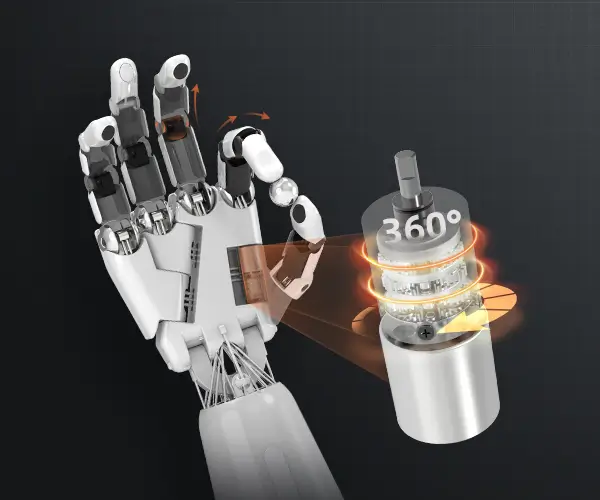Unveiling the Cost and Value of Servo Motors in Robotics: A Guide to Robotic Arm Pricing
In the fast-evolving world of robotics, few components are as crucial—and as often discussed—as the servo motor. Whether you're building a small DIY robot or developing an industrial robotic arm capable of precision tasks, the servo motor’s role is fundamental. It acts as the muscle behind movement, translating electrical signals into precise, controlled motion. But like any vital component, the question often arises: how much does a servo motor for a robotic arm cost?

The price range of servo motors can be surprisingly broad, reflecting a range of qualities, features, and applications. Understanding what influences these costs helps makers, engineers, and enthusiasts make smarter purchasing decisions, balancing performance and budget constraints.
The Basics of Servo Motors and Their Role in Robotics
To appreciate pricing, it’s helpful to understand what servo motors do. At their core, servo motors are compact, high-precision motors equipped with feedback mechanisms, usually encoders or potentiometers. This feedback allows the motor to maintain a specific position, speed, or torque, making it ideal for robotic joints requiring exact movements.
In robotic arms, each joint—whether arm, wrist, or finger—relies on a servo motor to achieve fluid, accurate motion. The quality of these motors directly affects the robotic arm’s performance: its speed, agility, stability, and overall lifespan.
Factors Influencing Servo Motor Pricing
Several key elements influence the cost of servo motors suitable for robotics applications:
Type of Servo Motor:
Standard Servos: Typically smaller, less powerful, often used in hobby or lightweight projects. Prices can start as low as $10 to $50. High-Torque Servos: Designed for heavier loads and demanding applications, these can range from $50 to several hundred dollars. Brushless Servo Motors: Offer higher efficiency, longevity, and precision, but come at a premium, often $100 to over $1,000.
Performance Specifications:
Torque: Robots requiring high torque—like industrial arms—need stronger motors, increasing costs. Speed: Faster servos usually cost more due to advanced engineering. Accuracy and Resolution: Servo motors with high positional accuracy or finer resolution tend to be pricier because of better feedback systems.
Build Quality and Materials:
Aluminum or metal gears and casings enhance durability and performance but also add to costs. Cheaper servo motors may use plastic gears that wear quickly under load, affecting longevity and requiring more frequent replacement.
Feedback and Control Features:
Digital vs. Analog: Digital servos provide better precision and responsiveness, generally costing more. Integrated controllers or programmable options are also factors that influence price.
Brand and Source:
Well-known brands like Dynamixel, Futaba, and Hitec tend to command higher prices but are trusted for quality. Less-established brands or generic options may be cheaper but could compromise on longevity or performance.
Intended Application and Customization:
Customizable or specialized servo motors for industrial or aerospace uses carry a premium. Standard hobby servos, often mass-produced for RC planes or cars, are cheaper but less suited to demanding tasks.
Price Trends and Market Overview
The market for servo motors has expanded significantly in recent years. With the rise of robotics in education, hobbyist projects, and industrial automation, there's now a diverse spectrum of options at different price points.
Hobby and DIY Market: Entry-level servo motors are often priced between $10 and $50. These are common in small, light-duty robots or educational kits. They are accessible but might lack the robustness needed for heavy-duty tasks. Mid-Range Motors: For more serious hobbyists or small-scale industrial projects, servo motors in the $50-$200 range provide better torque, speed, and durability. Professional and Industrial Grade: High-end servo motors, especially brushless variants with advanced feedback mechanisms, can range from $200 to over $1,000 each. These are typically used in manufacturing robots, aerospace applications, or research settings demanding top-tier performance.
Balancing Cost and Quality
Investing in the right servo motor isn’t just about finding the lowest price. It’s about matching the motor’s specifications with your project's requirements. A cheaper servo may save money upfront but could lead to reliability issues, increased maintenance, or reduced precision, ultimately costing more in the long term.
Conversely, high-priced servo motors aren't always necessary, especially for simple projects or prototypes. Knowing your application's demands helps determine the sweet spot between affordability and performance. Sometimes, pairing a slightly less premium servo with a robust power supply and control system can deliver excellent results without breaking the bank.
Stay tuned for Part 2, where we'll explore practical tips for selecting servo motors based on your project’s needs, dive into real-world cost comparisons, and discuss future trends shaping the pricing landscape for robotic servos.
Kpower has delivered professional drive system solutions to over 500 enterprise clients globally with products covering various fields such as Smart Home Systems, Automatic Electronics, Robotics, Precision Agriculture, Drones, and Industrial Automation.




































